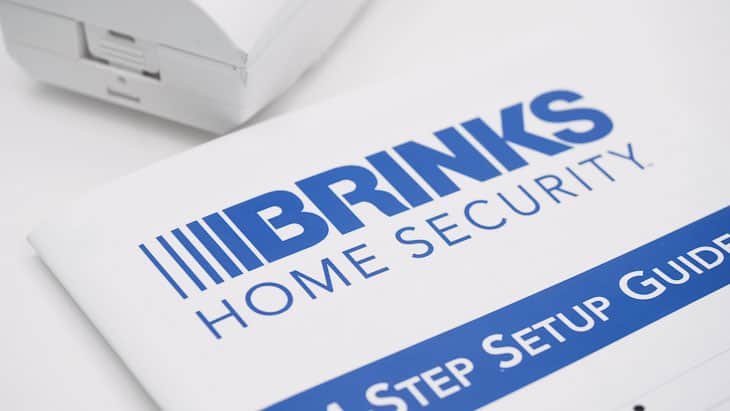
Here’s the thing: when you invest in a home security setup, you’re not just paying for fancy devices or a blinking panel on your wall. You’re buying peace of mind. And knowing how long Brinks stands behind their equipment isn’t just a fine-print detail—it helps you understand what kind of backup you’ve really got if something goes wrong. So, let’s walk through what the standard Brinks warranty actually covers, how long it lasts, and what it really means for you as a homeowner.
What Is a Standard Brinks Security System Warranty?
Before we get into the nitty-gritty of years and terms, let’s make sure we’re on the same page. When people talk about the “standard warranty” for Brinks security systems, they’re usually referring to the default protection that comes with your system—no extra fees, no special coverage needed. Think of it like the manufacturer’s word: “If something fails early on, we’ll make it right.” With Brinks, this typically means there’s a promise to repair or replace hardware for a certain window of time after installation.
Most Brinks security systems come with a standard two-year limited warranty. That’s the broad promise. But, as with any warranty, the devil is in the details. It usually covers defects in materials or workmanship for the security panel, sensors, and connected devices. That means if something stops working and it’s not your fault—you didn’t drop it, spill water on it, or try to rewire things yourself—Brinks should handle the repair or replacement.
So, what’s not included? Like most warranties, Brinks won’t cover accidental damage, Tampering, or issues caused by things like power surges, DIY code attempts, or non-standard batteries. If you try to sync the system with devices that aren’t officially supported or attempt a reset that voids the original setup, that could also leave you outside of warranty coverage. It’s kind of like a car warranty not covering you if you decide to fill the tank with orange juice instead of gas.
How Long Does the Standard Warranty Last—And What Does It Actually Protect?
Here’s the answer most people are looking for right off the bat: Brinks’ standard equipment warranty lasts two years from the date of installation. Not three, not forever—just two solid years. For most homeowners, this covers the core time when factory defects or early failures tend to show themselves.
But what does “lasts two years” really mean in real life? Picture this: your motion detector randomly stops working after 18 months, and you’ve been following all the standard troubleshooting steps—like checking batteries or making sure the sensor didn’t just fall off the wall. If the issue is a fault in the device itself, Brinks will typically repair or replace it at no charge. The same goes for your main security panel, door/window sensors, keypads, and other components originally included in your package.
Now, there are a couple of important caveats. The warranty “clock” starts ticking the day your system is installed and activated—not when you order it, and not when the truck pulls into your driveway. If you move your system to a different house or try to pair it with non-Brinks equipment, coverage might change. So if you’re hoping to code in your own upgrades or try out universal remote pairings, it’s worth double-checking first.
What’s Covered—and What’s Not: Reading Between the Lines
Honestly, warranty coverage can be a little wordy if you’re reading through pages of Brinks fine print. But the basic idea is pretty straightforward. The warranty covers defects in materials or manufacturing, but it doesn’t cover ordinary wear and tear or the kind of thing that happens when, say, your curious dog chews on a sensor (true story). Here’s a quick breakdown to make things even simpler:
- Covered: Devices that stop working due to flaws in the factory design, faulty electronics, or software malfunctions that aren’t your fault.
- Not covered: Damage from accidents, electrical surges, improper installation, using the system with unsupported code or batteries, or any attempts to reset or tinker beyond the instructions.
It’s also worth noting that batteries themselves usually aren’t covered under the two-year warranty. So if your device starts blinking and the troubleshooting guide points to a dead battery, you’ll probably be replacing that out of pocket—even in the warranty period.
Always double-check the actual warranty document for your specific system, as exact terms can sometimes shift with updates or promotions.
How Do You Make a Warranty Claim With Brinks?
Let me walk you through it, because honestly, nobody wants to be caught Googling “how to reset Brinks panel” at 2 a.m. after an alarm mishap. If you think your equipment is failing under warranty, start with standard troubleshooting—stuff like:
- Resetting the device according to your manual
- Changing the battery if it’s a sensor issue
- Trying to sync or pair the equipment again through your mobile app or keypad
If nothing works, contact Brinks customer service. Usually, you’ll need your account number, installation date, and a description of the problem—plus a quick summary of what you’ve already tried to fix it. Brinks may walk you through a few more sync or reset steps, but if it’s clearly a device issue, they’ll arrange to send you a replacement component or fix the faulty part.
Sometimes, they might ask you to send the broken item back. Be sure to ask about turnaround time—especially if you rely on that device for home security.
Warranty vs. Brinks Monitoring Plan: Is There a Difference?
You might be wondering, “Wait, isn’t my Brinks monitoring plan basically the same as a warranty?” Not quite. These are two totally separate things, and it’s easy to get them mixed up, especially if you’re new to the world of home security.
The standard warranty covers your physical equipment—door sensors, panels, remotes, and so on—against factory defects for that two-year window. Your monitoring plan (which you pay for monthly) covers things like their 24/7 professional monitoring service, emergency alerts, and mobile app access. Even if you cancel monitoring, the warranty for your hardware doesn’t automatically disappear (but you might be responsible for certain troubleshooting or repairs yourself).
Some higher-tier Brinks plans offer extended warranties as a perk. So if having that longer safety net matters to you, it’s worth checking what’s included in the plan you pick.
Can You Extend or Upgrade Your Brinks Equipment Warranty?
What if you’re the kind of person who likes extra backup—like buying travel insurance for a simple road trip? Good news: Brinks sometimes does offer extended warranty options, often tied to premium monitoring plans or as a separate add-on.
For example, upgrading to a higher monthly monitoring tier might get you a lifetime warranty for as long as you maintain the plan. But you’ll need to double-check the details, since these offers can come and go. Some people find it worth the extra money just for the peace of mind—especially if you’re planning to stick with Brinks for years.
If you stick to the standard plan, though, it’s just those original two years. After that, you’re responsible for repairs, replacements, or upgrades—unless you buy new equipment or negotiate an add-on warranty.
Comparing the Brinks Warranty With Other Security Brands
Let’s be real: two years is pretty standard for home security equipment. But how does Brinks actually stack up next to the competition?
- ADT and Vivint usually offer similar or slightly longer terms if you pay for premium monitoring (three years is common), but basic plans often match Brinks’ two-year window.
- DIY systems like SimpliSafe or Ring often come with a one-year warranty—shorter, but sometimes with an option to extend.
- Universal remotes or third-party add-ons may only have 90-day or limited coverage, and if you add these to your Brinks system, you could risk voiding the original warranty.
So, while Brinks isn’t the longest in the game, they’re right in line with what most people expect from a big-name professional security brand. Honestly, the difference often comes down to customer service and how easy it is to get help when something goes wrong.
Why Does the Warranty Matter for Everyday Use?
Sometimes it feels like warranties are just background noise—until you’ve got a panel that won’t stop beeping in the middle of the night, or a sensor stuck in trouble mode. That’s when you realize, “Oh, I’m so glad this thing’s still under warranty!” Because, let’s face it, security systems aren’t cheap, and nobody wants to pay to replace a two-year-old sensor that just fizzled out through no fault of their own.
Here’s what I always tell people: knowing your warranty means you can sync up your expectations—and your troubleshooting steps—without panic. If your system’s still under warranty, you can call Brinks and get help without worrying about what it’ll cost. If it’s not, you might need to budget for repairs or look at swapping parts yourself (which, let’s be honest, isn’t most people’s idea of a fun weekend).
Plus, understanding the warranty helps you make smarter decisions—like whether to go with the standard package, upgrade your plan, or choose a different brand altogether.
Final Thoughts: Making the Most of Your Brinks Security Warranty
So, circling back: the standard warranty for Brinks security systems is two years for most new devices, covering manufacturing defects and hardware failures. It kicks in from installation, and as long as you use your equipment as intended—no wild attempts to pair with random remotes or repeatedly resetting your panel for sport—you’re set for basic coverage.
Don’t forget to check your particular warranty terms, especially if your system came as part of a bundle or special deal. And, if you ever find yourself stumped by a stubborn sensor or a code that won’t sync, reach out to Brinks support—they’ll walk you through the troubleshooting steps, and if it’s covered, make things right.
At the end of the day, a warranty isn’t just paper or a digital checkbox. It’s that bit of extra reassurance that, when your security matters most, you’ve got someone in your corner—umbrella at the ready, just in case the storms roll in.
